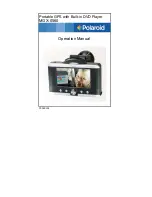
UBX-G7020 - Hardware Integration Manual
Design-in
GPS.G7-HW-10003
Objective Specification
Page 40 of 74
2.9
Layout
2.9.1
Placement
GPS signals at the surface of the Earth are about 15dB below the thermal noise floor. A very important factor in
achieving maximum GPS/GNSS performance is the placement of the receiver on the PCB. The Placement used
may affect RF signal loss from antenna to receiver input and enable interference into the sensitive parts of the
receiver chain, including the antenna itself. When defining a GPS receiver layout, the placement of the antenna
with respect to the receiver, as well as grounding, shielding and interference from other digital devices are
crucial issues and need to be considered very carefully.
Signal loss on the RF connection from antenna to receiver input must be minimized as much as possible. Hence
the connection to the antenna must be kept as short as possible. Doing this will help avoiding interference into
the very sensitive RF section.
Make sure that RF critical circuits are clearly separated from any other digital circuits on the system board. To
achieve this, position the receiver digital part towards your digital section of the system PCB and have the RF
section and antenna placed as far as possible away from the other digital circuits on the board.
A proper GND concept shall be followed: The RF section should not be subject to noisy digital supply currents
running through its GND plane.
Care must also be exercised with placing the receiver in proximity to circuitry that can emit heat. The RF part of
the receiver is very sensitive to temperature and sudden changes can have an adverse impact on performance.
The crystal or TCXO of a GPS receiver is a temperature sensitive device. Avoid high
temperature drift and air convection.
Crystal oscillator circuits are very sensitive to noise from adjacent lines. This is especially true for the high-
impedance RTC circuit. It is strictly recommended to use an appropriate guard ring design in order to shield the
crystal circuit from crosstalk.
2.9.2
Package footprint, copper and solder mask
Copper and solder mask dimensioning recommendations for the UBX-G7020 packages are provided in this
section. For all packages, the yellow color shows the copper (etch) dimensions, the green color shows the solder
mask opening dimensions and the red circles indicate vias. Some PCB manufacturers prefer to adapt solder mask
openings to their process tolerances. The recommendations given in this section provide the nominal openings
not including such additional tolerances.
Paste mask recommendations are not provided as these are usually specifically related to the solder paste in use
as well as the particular reflow process.
Confidential















































